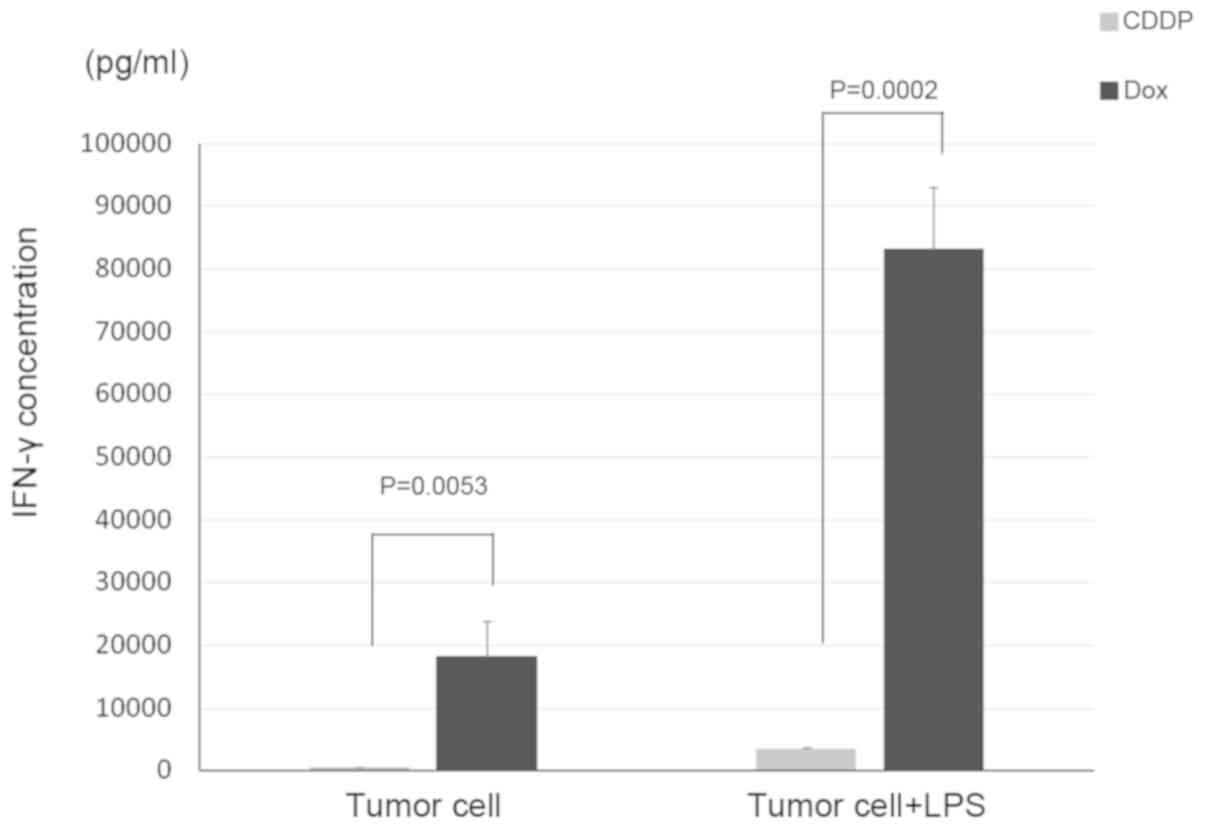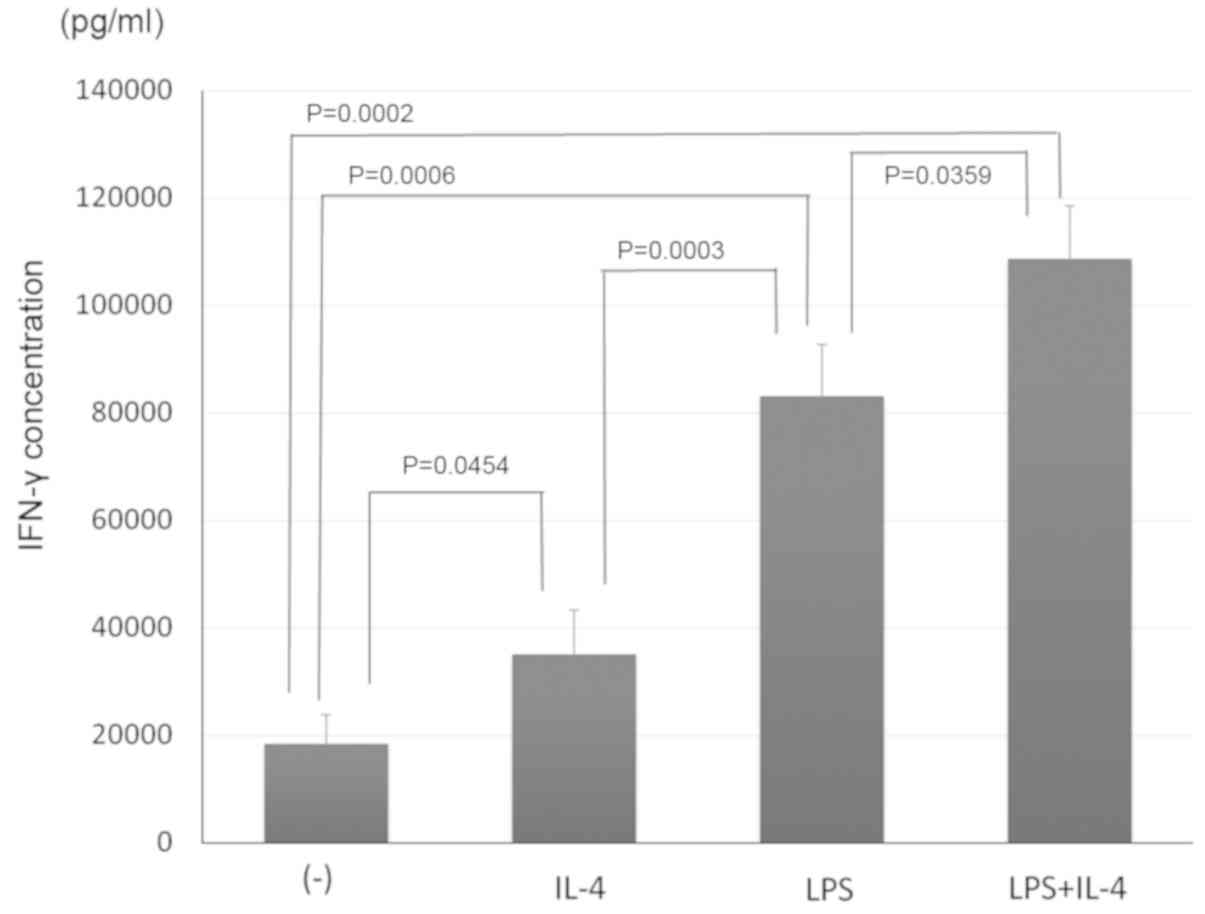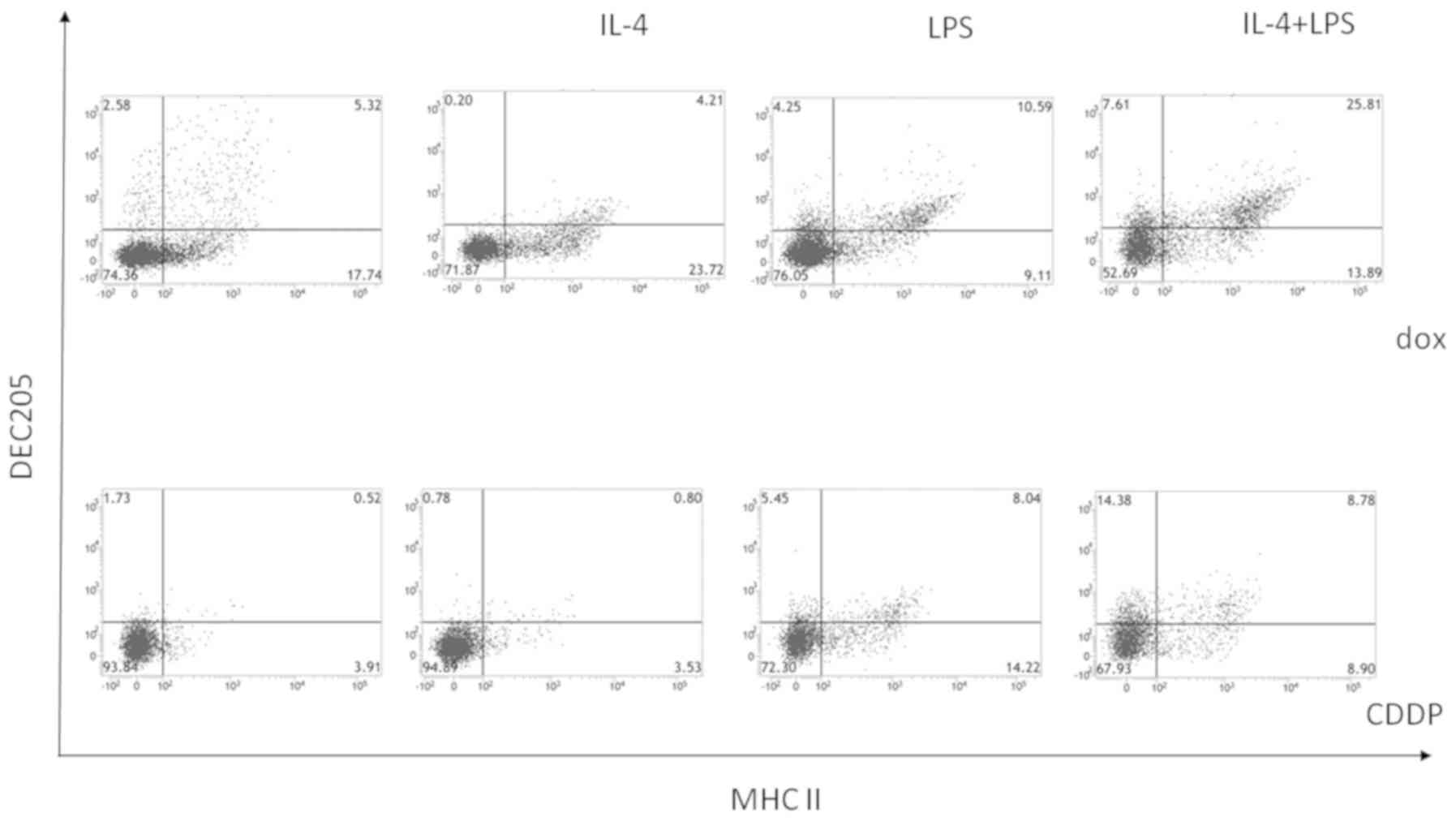Ex vivo induction of antitumor DEC‑205+ CD11c+ cells in a murine neuroblastoma model by co‑stimulation with doxorubicin, lipopolysaccharide and interleukin‑4
Corrigendum in: /10.3892/br.2020.1351
- Authors:
- Published online on: November 20, 2015 https://doi.org/10.3892/br.2015.546
- Pages: 27-32
Metrics: Total
Views: 0 (Spandidos Publications: | PMC Statistics: )
Total PDF Downloads: 0 (Spandidos Publications: | PMC Statistics: )
Abstract
The antigen‑presenting capacity of specific cells and tumor immunogenicity involved in innate cellular immunity are important for initiating an antitumor response to advanced neuroblastoma. The present study was performed to establish a method of producing antigen‑presenting cells that induced an immune response to murine neuroblastoma cells through culture with neuroblastoma cells that had undergone immunogenic cell death. Immunogenic death of neuro‑2a murine neuroblastoma cells was induced by exposure to doxorubicin. Mouse bone marrow cells were cultured in medium containing granulocyte‑macrophage colony‑stimulating factor, followed by the addition of doxorubicin‑treated neuro‑2a cells to the culture with or without lipopolysaccharide (LPS) and/or interleukin‑4. Subsequently, cluster of differentiation (CD) 8α+ lymphocytes were co‑cultured with neuro‑2a cells and the adherent bone marrow cells obtained by the above procedure to evaluate CD8α+ lymphocyte proliferation and interferon‑γ production. Furthermore, the surface antigen profile of adherent bone marrow cells was analyzed by flow cytometry. When adherent bone marrow cells were treated with LPS and/or interleukin‑4, followed by co‑culture with CD8α+ lymphocytes and neuro‑2a cells, interferon‑γ production by the CD8α+ cells increased in response to anti‑CD3/CD28 antibody stimulation. CD11c major histocompatibility complex II (MHC II) double‑positive cells were increased among adherent cells derived from cultured bone marrow cells. These cells were positive for DEC‑205, but not CD8α. These findings suggest that co‑culture of bone marrow‑derived cells with tumor cells (that have undergone immunogenic death by exposure to doxorubicin) plus stimulation by LPS and interleukin‑4 induces antigen‑presenting cells that can evoke an immune response to neuroblastoma. Bone marrow‑derived DEC‑205+ CD11c+ MHC II+ dendritic cells are key antigen‑presenting cells in the induction of an immune response following phagocytosis of doxorubicin‑treated neuroblastoma cells.














